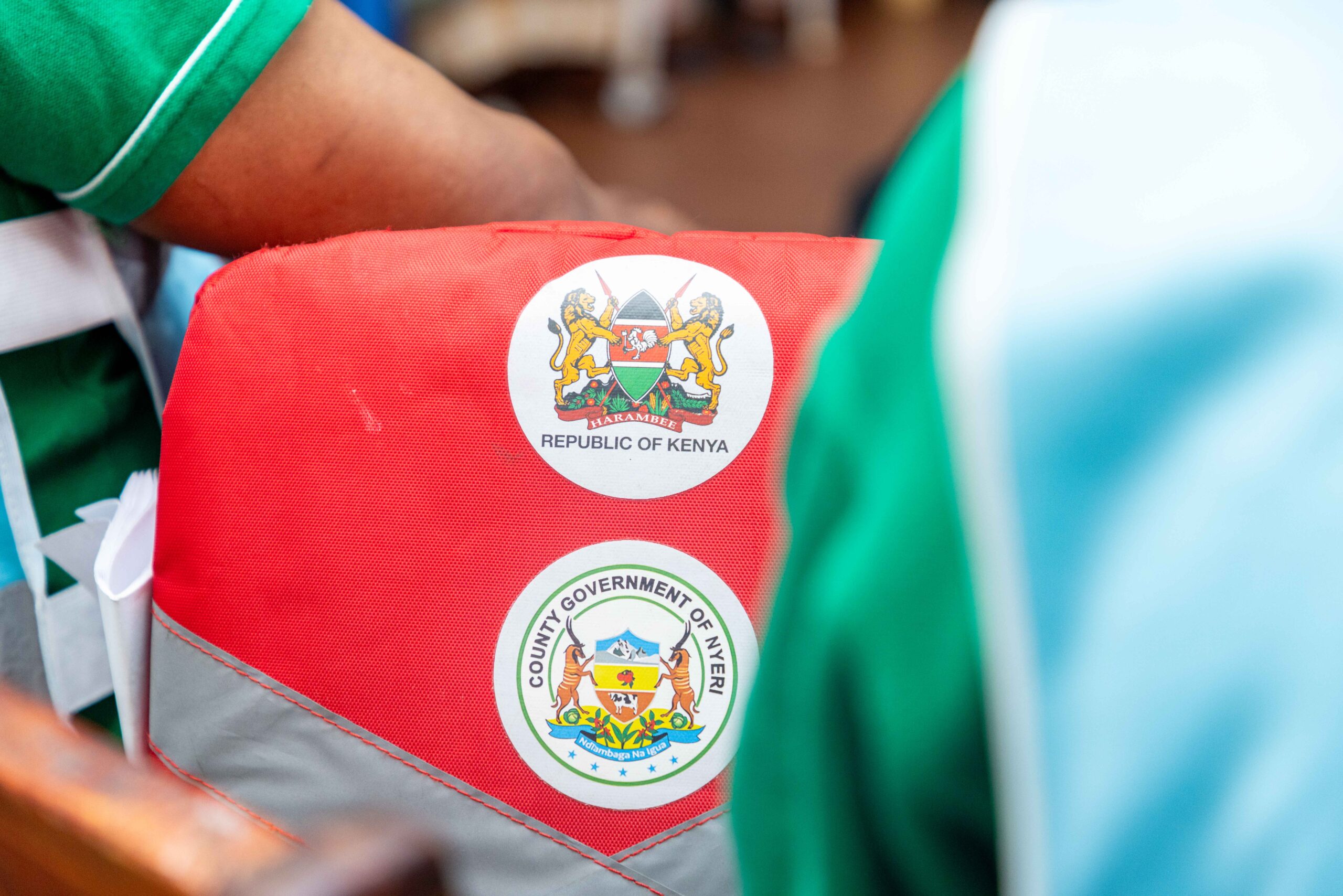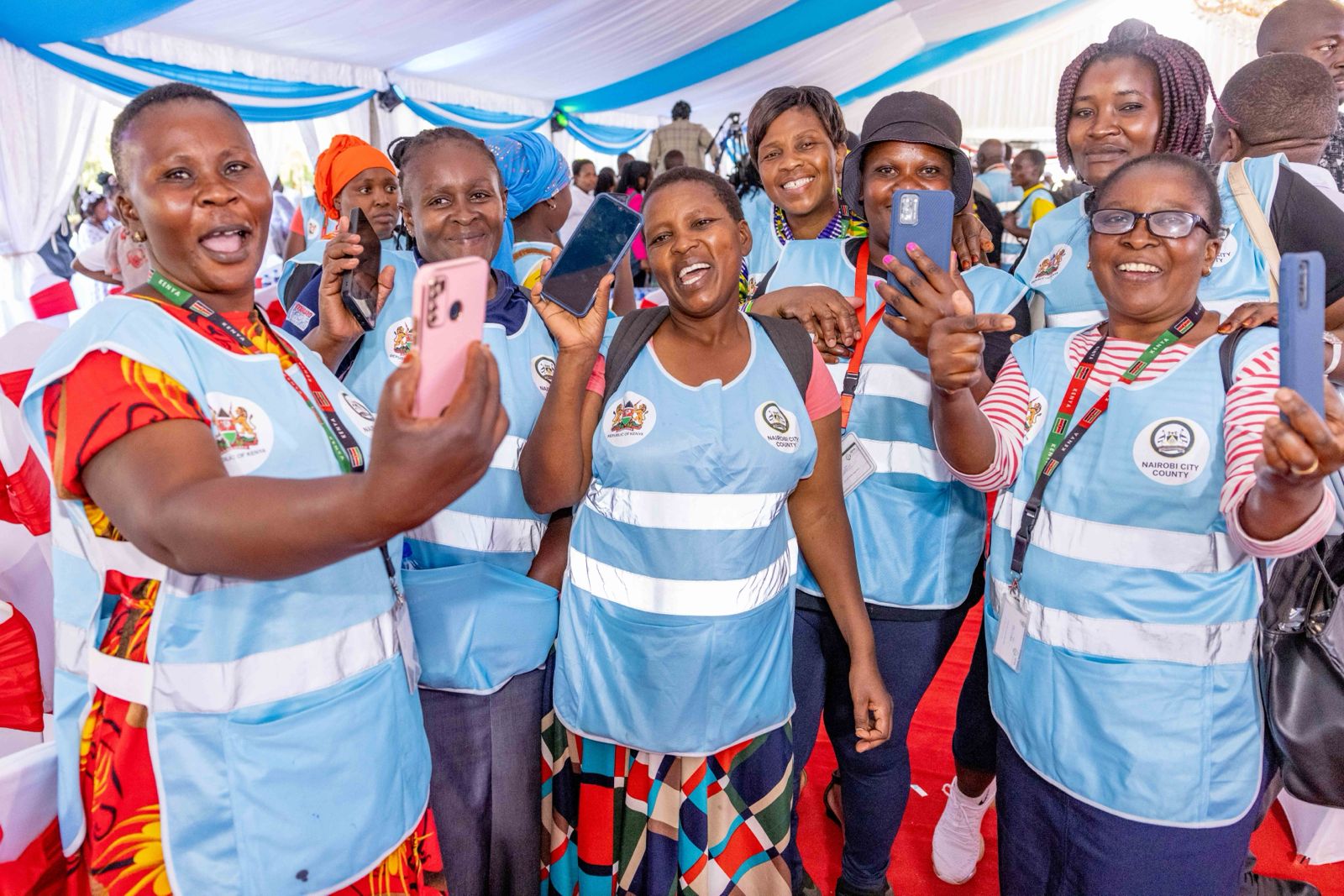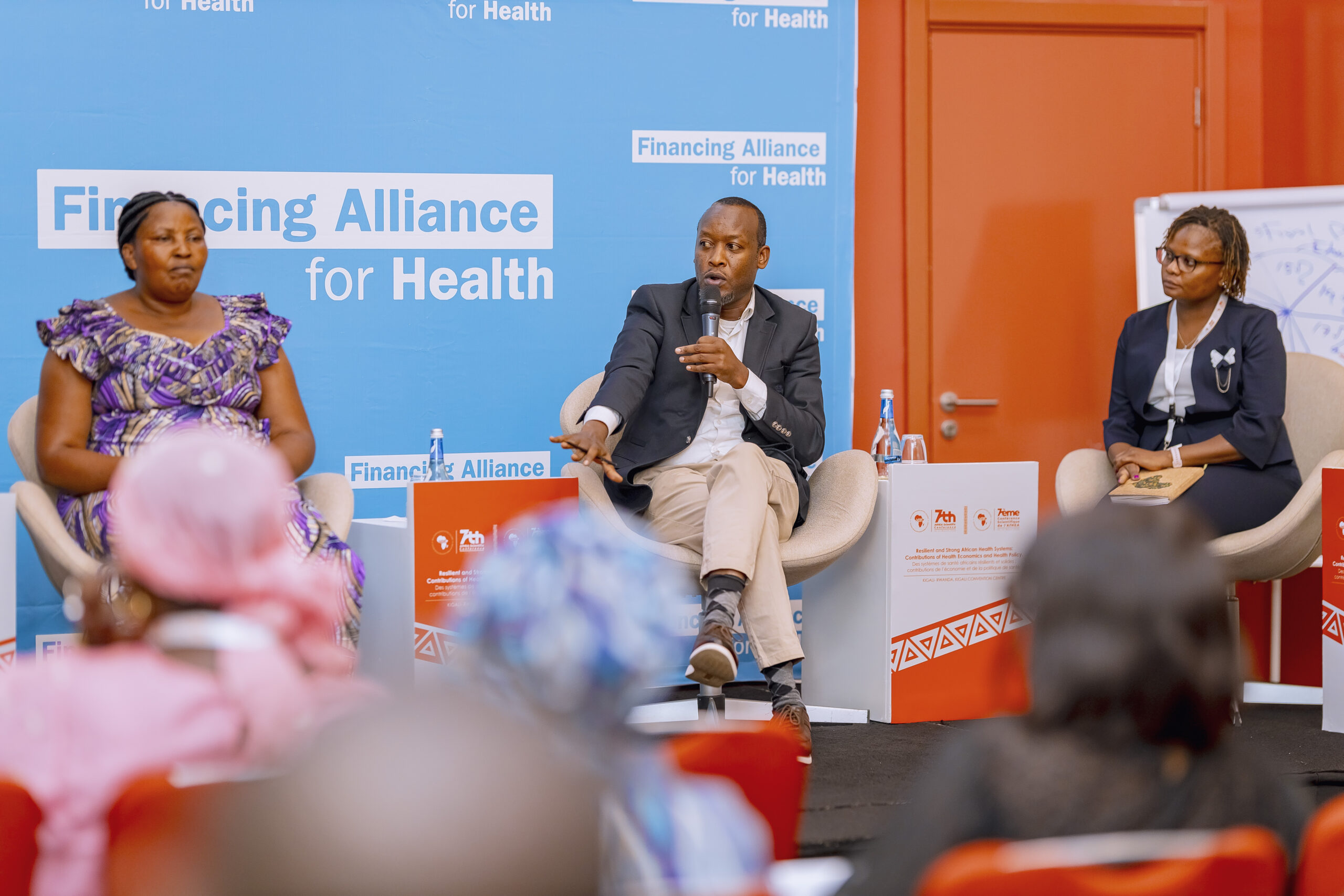Community health services are delivered within a community health unit (CHU), which is the first point of care within the health system. The community health policy prescribes that each CHU should have 10 community health volunteers (CHVs) and 5 community health assistants (CHAs). CHVs deliver their service under the supervision of the CHA.
Kilala Location has approximately 50 community health volunteers (CHVs). Each CHU within the location has 4 CHVs serving households. We spoke to 5 CHVs and their supervisor, the Community Health Assistant, to learn about their experiences delivering community health services.
Participants:
- Monica Kakunia
- Urbanus Munywoki
- Valentine Makula
- Monicah Mutiso
- Dorothy Saidi
- Elizabeth Muema, Public Health Officer and Community Health Assistant (CHA)
How did you become a CHV, and what is your role?
Monica: We were trained in 2014 by the county government. I now register clients for antenatal care visits and ensure that they attend their clinic visits; conduct postnatal care visits where I promote good nutrition for mother and baby; ensure children are immunized, conduct follow up for vitamin A supplementation for under-5 children; ensure there is cleanliness in the village to prevent the spread of disease; ensure families are sleeping under bed nets; ensure households use dishracks and cloth lines; ensure there are no bushes in the households’ compound; and ensure households have a rubbish hole. I visit households on Tuesdays and Friday.
Urbanus: I was trained on mental health screening by the Mental Health Foundation over the period of a year. I was thereafter able to identify and refer clients to the health facility for treatment. I also screen for glucose and hypertension. There are many people suffering from these two diseases in my area. I received a glucometer and BP machine to support in screening. Clients I refer clients for treatment are always very grateful for the service I offered. I am motivated in my work because I help others
What is your typical day?
Monicah: I was trained to commit 2 days of the week to household visits. I visit my assigned households on Monday and Friday, and serve approximately 28 households. On these days, I wake up, do my household chores and then start my household visits at 11a.m. At the household, I inspect the entrance for a handwashing station as a COVID-19 prevention measure. People have really taken up handwashing, that children now proactively replace the water. I also ensure that there is a handwashing station outside the latrine. So far, the cases of diarrhea and other hygiene-related illnesses have declined. I also train women on handwashing before breastfeeding and on handling children’s waste. When I find an ill person, I take them to hospital. I complete my household visit at around 3p.m although his is dependent on the amount of time required by each client.
Dorothy: I was trained in 2014 and started to visit households thereafter. At the household, I identify myself and the purpose of my visit, which is to provide training on cleanliness particularly amongst pregnant women and infants. I advise pregnant women to plan ahead for their delivery for example, on saving adequately to meet various expenses, to identify and inform the person accompanying them to hospital, good diet and general wellness. I also ensure that pregnant women attend antenatal clinics. Clients trust me and allow me to review their clinic books. When the baby arrives, I support the woman with the initial feeding and ensure the baby receive the measles vaccines. I always adhere to the CHV guidelines.
What changes have you seen in your community since you began your CHV role?
Monica: I can certainly see a difference in my community as a result of my work. Prior to my training, community members suffered from cough and malaria. Mothers also didn’t take their children for immunization. All this has changed now. There are fewer sick children in my community now. Geriatrics trust me so much so that they are willing to reveal their ailments to me, yet are shy to disclose this to their children – they open up about ailments such as blood sugar complications, hypertension and urinary hesitancy. When the geriatrics tell me about their conditions, I tell their children in confidence so that they can raise the necessary funding required for me to take the geriatric to hospital. I’m happy my friends and neighbors are healthy
Dorothy: Women previously did not go for antenatal clinic visits and instead used traditional birth attendants. This is now changing. They are also taking folic acid supplements without complaining. Women deliver at health facilities and as a result, there are fewer birth complications.
What challenges do you face while delivering community health services?
Valentine: While I have dedicated some days for community health visits, sometimes I have other competing priorities at home. I’m a volunteer, but this is not ideal as I have other responsibilities. I would like to receive a token for motivation. Also, members of the community ask for commodities such as water treatment products which we do not have. We previously received 5 water guard tablets per household but this ceased.
Urbanus: We received glucometers and blood pressure machines for a week, and had to return them to the health center for use by other CHVs. A lot of demand was created within the community during the one week we had the machines. We should have these machines available to us at all times.
Monica: People ask me to make contributions to their households such as face masks. I have to keep reminding them that I a volunteer, and hence not able to make such donations. We also need blood pressure machines. I had to ask my son to take an ill client for testing at the health center. Such machines should be shared between 2 CHVs. We really need the CHV kit and identification cards. We received two motorcycles per community health unit, one was to be used for transportation during our household visits and the other to generate income by offering transport to community members. However, the motorcycles are not powerful enough to traverse hilly areas. We need motorcycles with 150 CCs and not the 125 CCs we currently have.
Elizabeth: There are 13 CHUs in this Ward and only 2 supervisors. We are expected to convene a monthly reporting meeting for each CHU, in addition to my other public health workload. Transport facilitation is also not available.
What types of income generating activities do CHVs conduct?
Urbanus: My CHU has a table banking scheme and distributes the principle and interests across the group at the end of the year. We do our table banking transactions on the same day we have our monthly reporting meeting at the health center. Access to finances is a big motivator for us to attend the monthly meeting.
Elizabeth: The motorcycles CHVs received for income generation are now grounded. This demotivated CHVs, some of whom now don’t attend monthly meetings. A number of CHVs attend monthly reporting meetings in order to borrow money from the table banking scheme. We have to keep encouraging our CHVs to continue their role.
How do you collect and report data?
Monica: After training, collected and reported data using our mobile phones. When the NGO mobile reporting pilot project ended, we switched to the government’s paper-based system. We report on indicators such as treatment defaulters, pregnant women, availability of a latrine at the home etc. There is a shortage of reporting tools though. As we know the indicators we should report on off the top of our heads, we now collect data on pieces of paper torn from our notebooks, and submit them to the CHA.
What have you done to prevent the spread of COVID-19 in your community?
Dorothy: I told my assigned households to add a handwashing station at the entrance to their homes, in addition to the one outside the latrine. I also tell them to keep a watchful eye over their children who are away from school, and encourage teenagers to involve themselves in activities such as football to avoid idleness. I bought my own face mask and wear it during my household visit, and ask household members to do the same. None of the CHVs has had to take care of a home-based COVID-19 patients.
What are your needs as CHVs?
Monicah: We would appreciate a stipend, certificate, training, personal protective equipment, glucometers, blood pressure machines, IDs, t-shirts, water treatment products and transport facilitation.
What are you most proud of as a CHV?
Monica: I was able to coordinate my community to raise $1,000 for one of my client’s cancer treatment. She died last week though. We were able to use some of the surplus money from her treatment for her funeral arrangements. If I hadn’t supported this woman, her family would have had to sell their land to raise money for treatment.
Monicah: A few years back, I supported a school girl who got pregnant and was rejected by her parents. I would accompany the girl for her antenatal care visits. I counselled her regularly especially at the time when she was suicidal. I offered my support throughought her pregnancy and was present at the time of her baby’s birth. I also asked her school’s administration to allow her to take a maternity break. This young lady is now married and happy. Her child is in nursery school. She still visits me to date, and thanks me for all the support I offered her.



